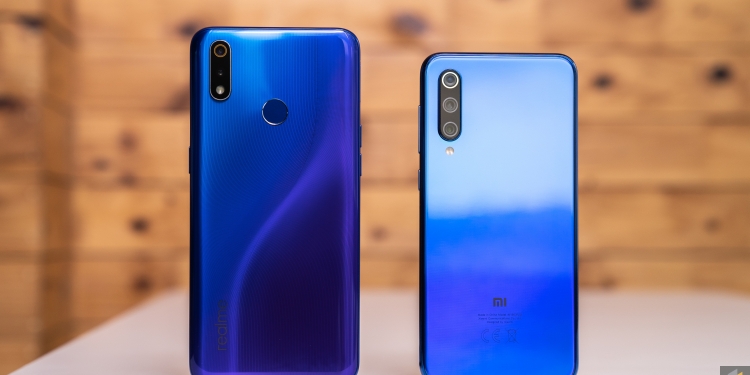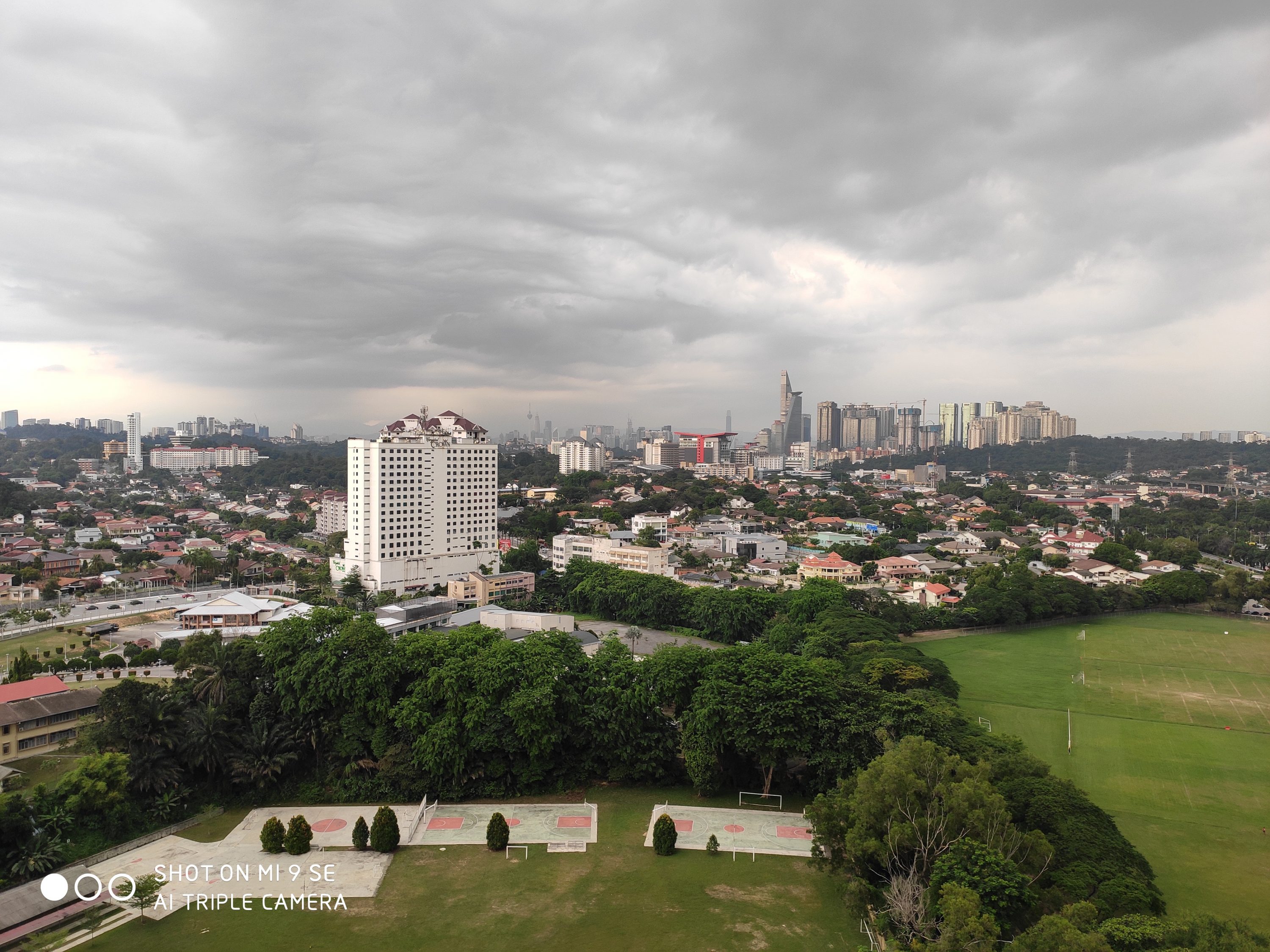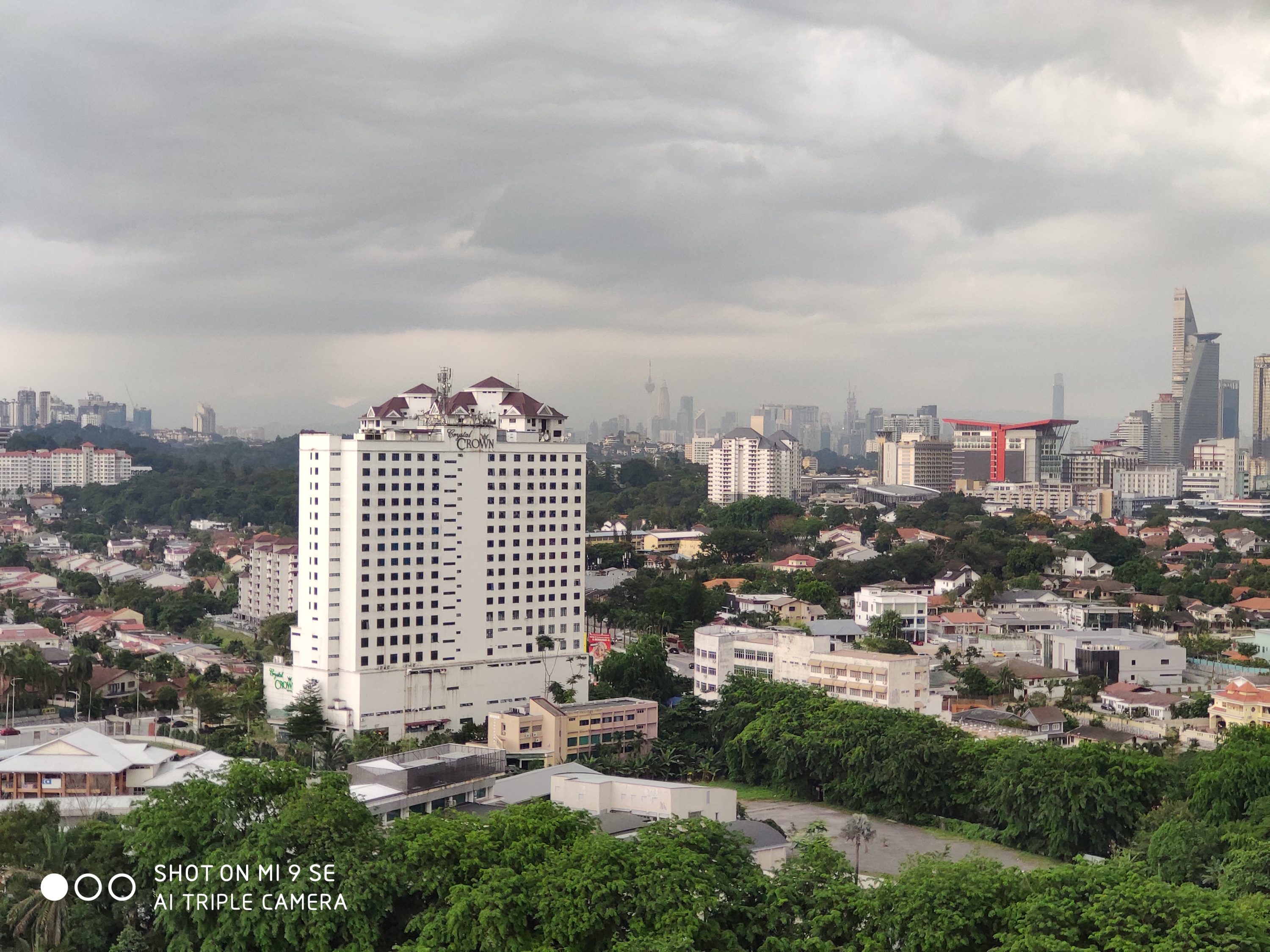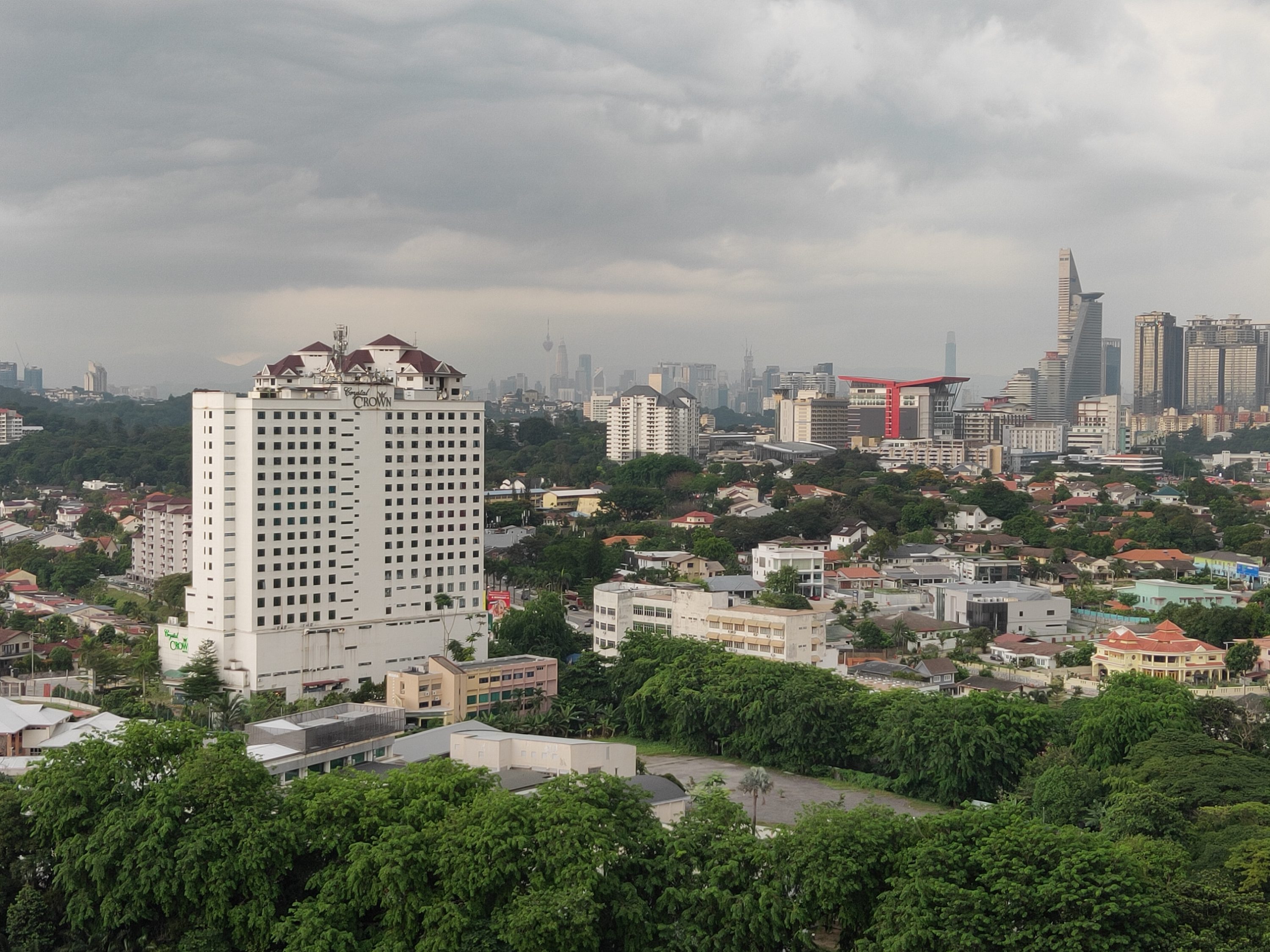With how quickly smartphones in the affordable mid-range have grown, it was really only a matter of time before we started seeing upper mid-range processors like the Snapdragon 7 series chips make it into these affordable handsets. Today, we’re taking a look at two of the newest smartphones to sport these chips, the Xiaomi Mi 9 SE and the Realme 3 Pro.
I don’t think Xiaomi as a brand needs much introduction, and neither does the Mi 9 SE. It is designed to be a more toned down version of the company’s flagship Mi 9, but at a much lower price point. And, for the most part, I think they did a solid job.
Realme, on the other hand, are a much newer brand here. However, while they started off as just another OPPO spin off, the company quickly built a name for itself by offering really good smartphones at incredible price points. And the Realme 3 Pro builds on that with yet another strong showing.
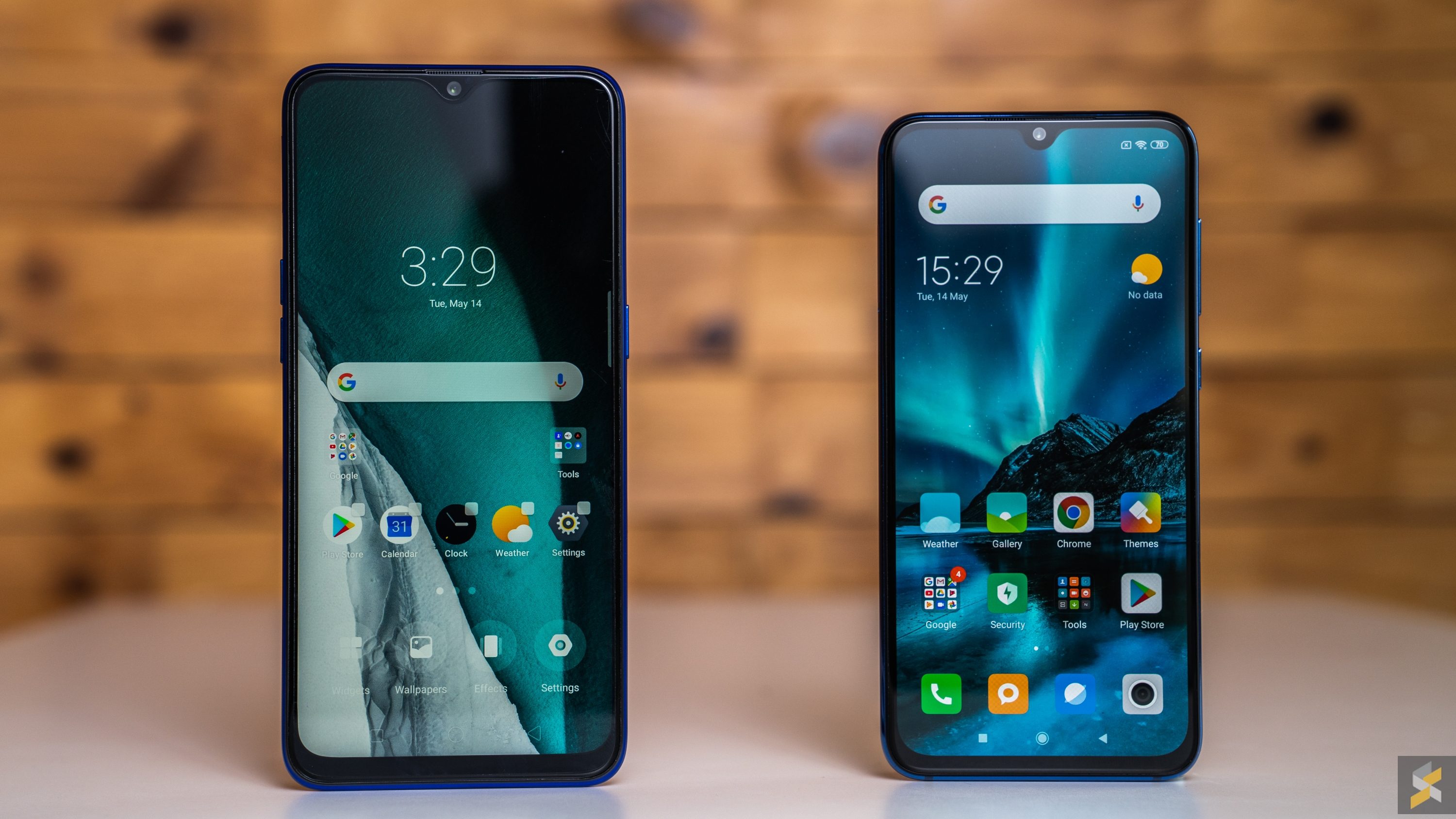
The Screen
Let’s start with a look at the phones themselves. Right off the bat you’ll notice that the Realme 3 Pro is a much bigger smartphone. That’s because it sports a 6.3” LCD display with a dew-drop notch, while the Mi 9 SE rocks a 5.97” AMOLED panel. That said, both do push Full HD resolutions, but the fact that the Mi 9 SE has an AMOLED does mean that it’ll have better contrast and deeper blacks. It is also worth noting that both Xiaomi and Realme have protected their displays with Corning’s Gorilla Glass 5, which is a nice touch.
However, despite the larger screen, I don’t think that the Realme 3 Pro is significantly more difficult to handle compared to the Mi 9 SE. This is thanks to its nicely curved back which helps it fit comfortably in your hand.
But, I have to say that I prefer the Mi 9 SE’s body. I love the size and the way it feels in my hand, plus I like that it also feels like a more expensive smartphone. Of course, this is highly subjective, so I’d recommend you feel them out for yourself if you get the chance.
The Specs
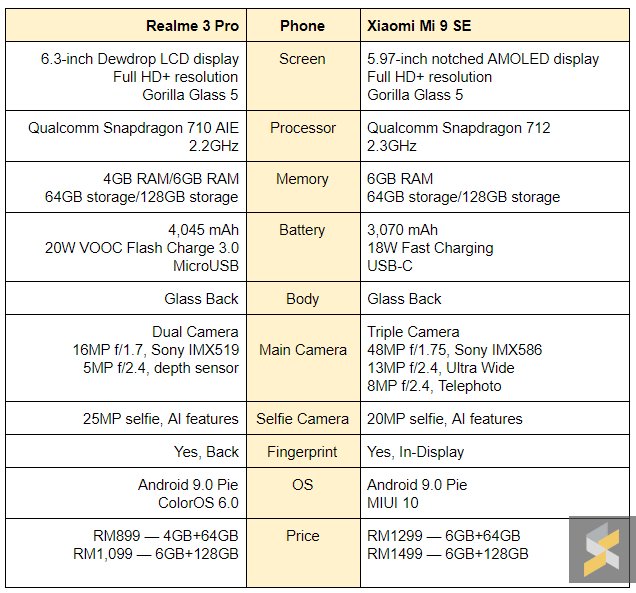
Both the Mi 9 SE and the Realme 3 Pro come with Snapdragon 7 series processors, however the one on the Mi 9 SE is slightly more capable. Xiaomi’s device packs a Qualcomm Snapdragon 712 processor while the Realme 3 Pro features a Snapdragon 710 chip.
Now, these processors are pretty similar in nature. They’ve got the same Adreno 512 GPU and are also built with Kryo 360 cores, however, the Snapdragon 712 is clocked slightly higher at 2.3GHz. Comparisons put the Snapdragon 712 at about 10% better than the 710 at both CPU and GPU performance. That being said, I speak from experience when I say that it’s often hard to notice a 10% bump in performance in daily tasks, so you should take your smartphone workload into consideration.
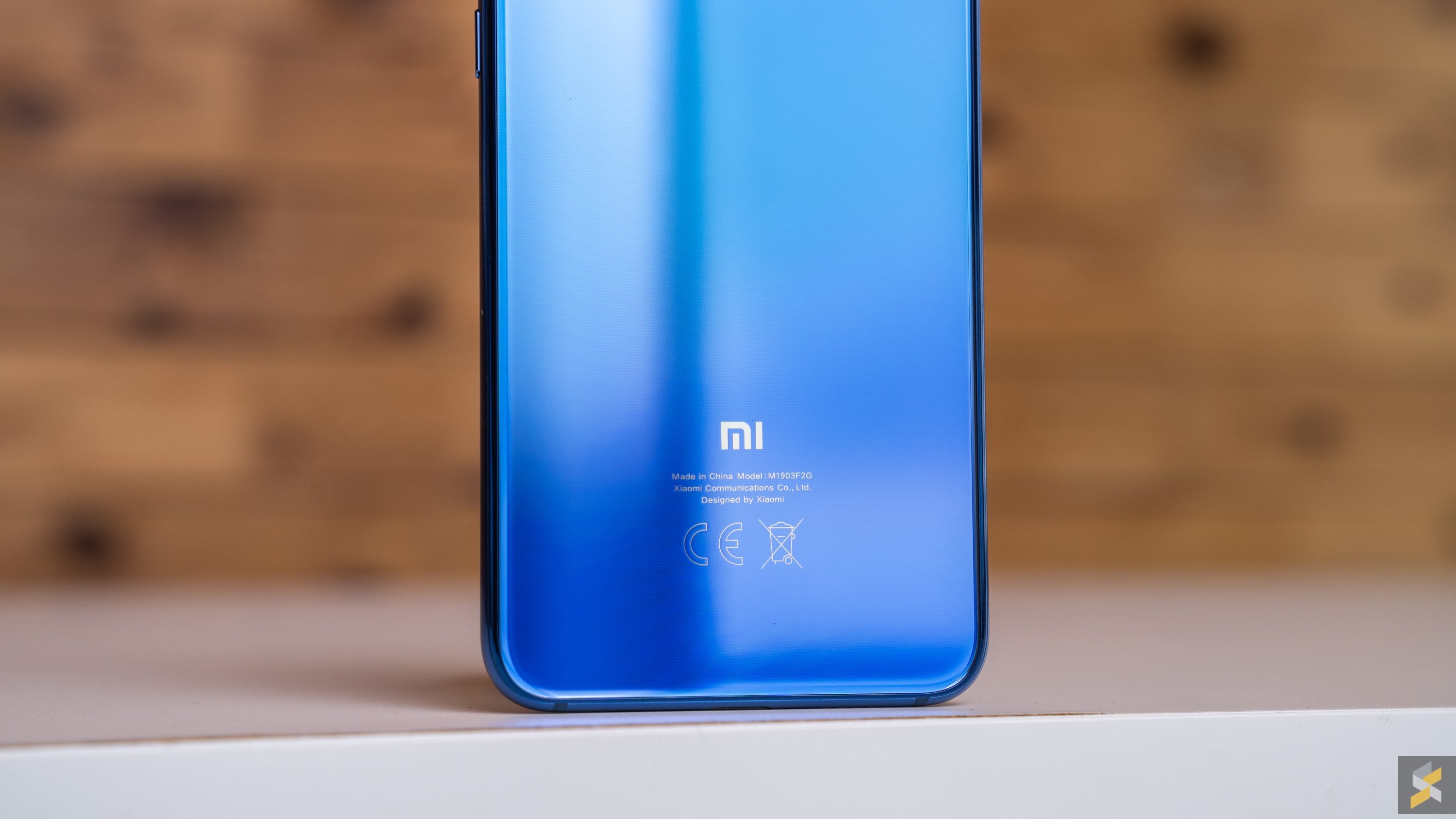
Memory configurations for these smartphones are also a little different. Yes, they both have high spec variants that top out at 6GB of RAM and 128GB of internal storage, but the Realme 3 Pro’s base model only has 4GB of RAM and 64GB of internal storage while the Mi 9 SE retains the 6GB of RAM and only drops storage to 64GB.
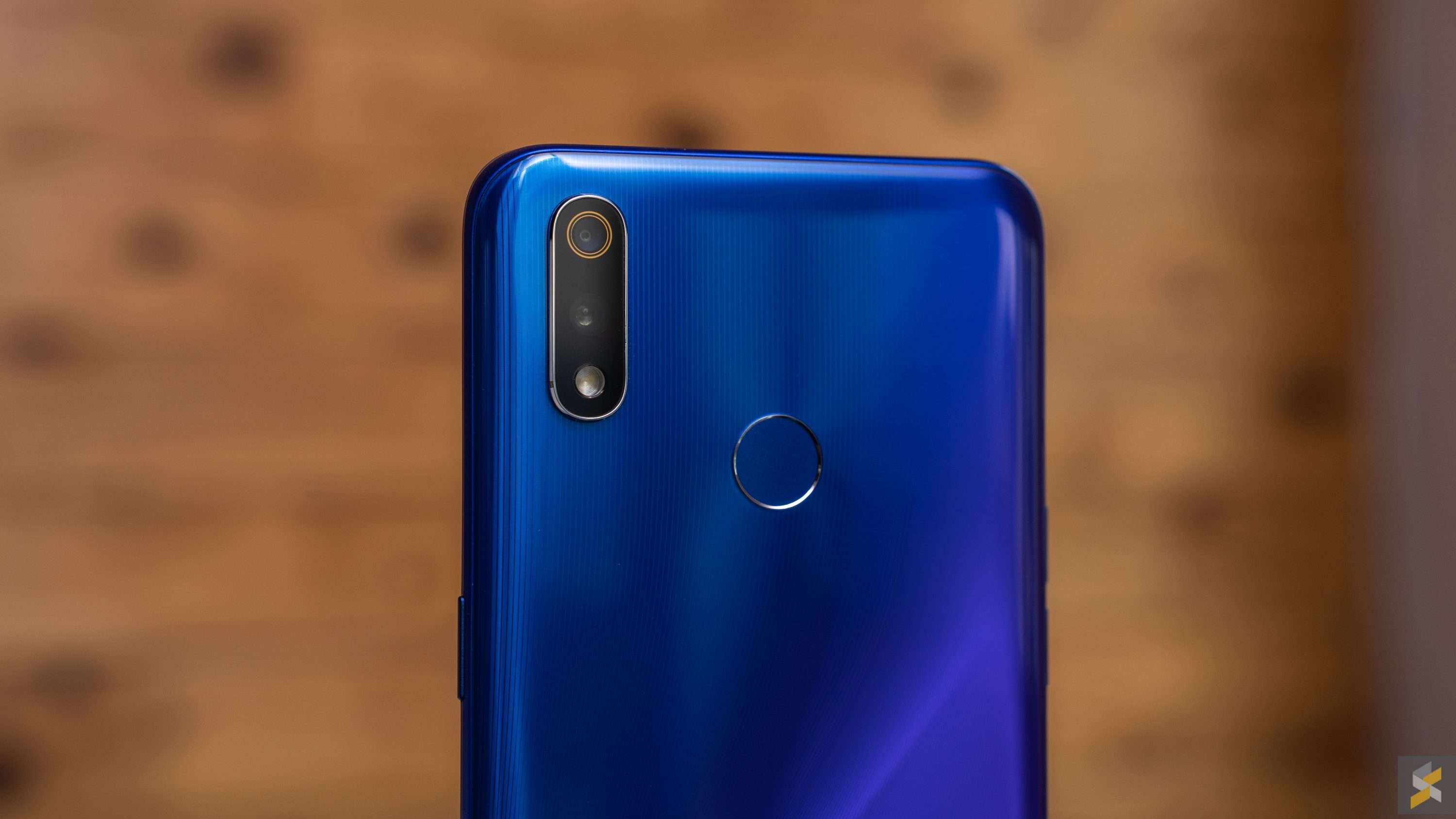
Where the Realme 3 Pro edges the Mi 9 SE out, is in memory expansion, as it features a dedicated microSD card slot on its triple-slot tray. The Mi 9 SE, however, doesn’t feature any form of memory expansion which is kind of a bummer.
Another point against the Mi 9 is the fact that it has a much smaller battery than the Realme 3 Pro. The Mi 9 only comes with a 3,070 mAh battery while the Realme 3 Pro comes rocking a 4,045 mAh battery instead. The Realme 3 Pro also has a faster charging standard thanks to its 20W VOOC Flash Charge 3.0 support while the Mi 9 SE supports 18W Fast charging. The only upside here for the Mi 9 SE is that it charges via USB-C while the Realme 3 Pro stubbornly sticks to micro USB.
While both of these phones have been trading blows so far, there is one aspect where the difference really sets in.
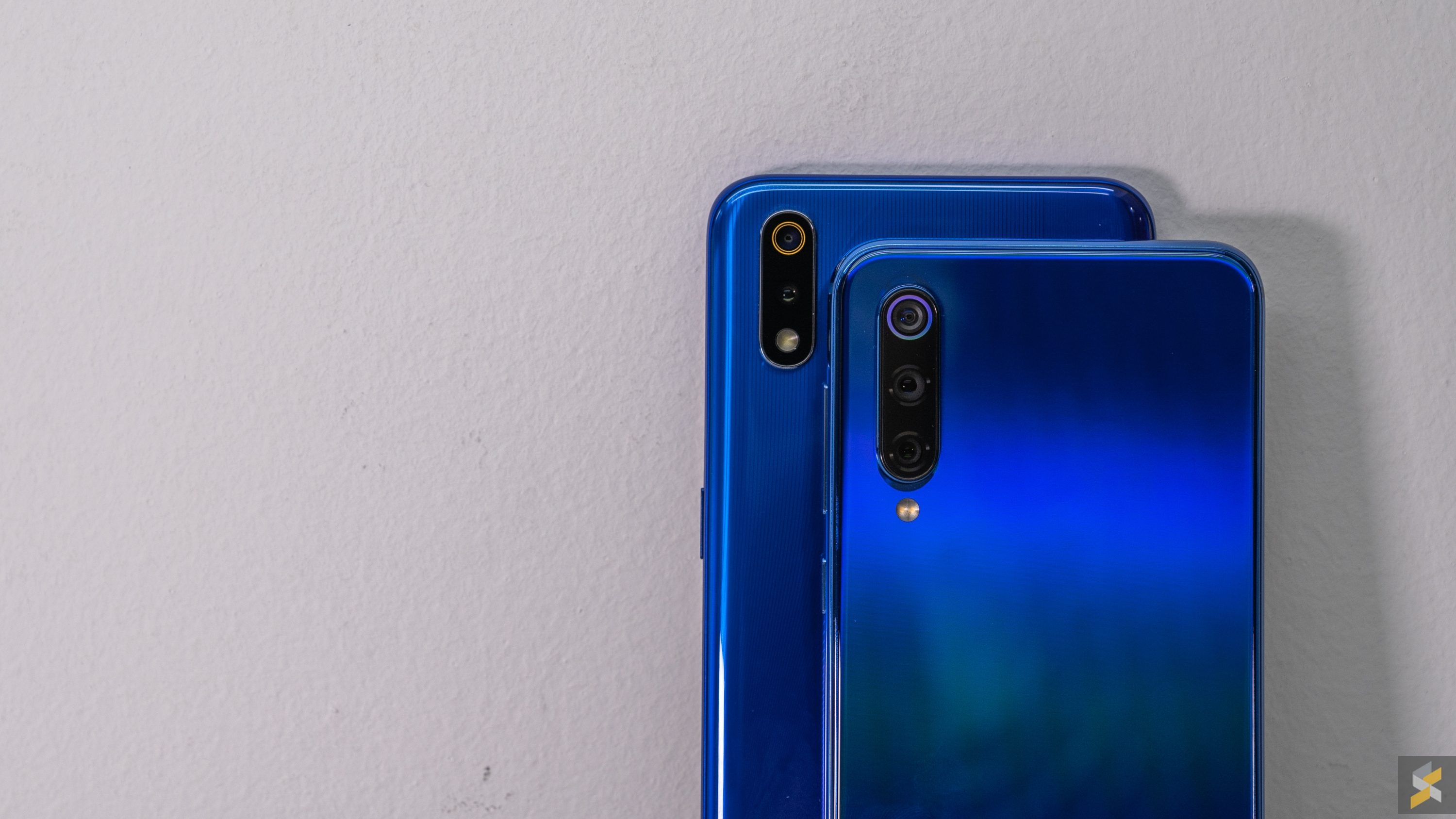
The Cameras
You can tell that Xiaomi wanted the Mi 9 SE to be a solid smartphone camera because they’ve given it all the bells and whistles. It has the 48MP Sony IMX586 sensor as its main camera with an f/1.75 aperture lens, an 8MP telephoto camera with an f/2.4 aperture lens, and a third 13MP ultra-wide camera with an f/2.4 aperture lens. This wide, ultra wide and telephoto combo is what you’d find on high-end flagships, not a mid-ranger.
On the other hand, the Realme 3 Pro features a single 16MP Sony IMX519 camera with an f/1.7 aperture lens that’s supported by a 5MP f/2.4 depth sensor.
So, if you were expecting a huge difference in image quality…I was too, but preliminary testing seems to yield a different result. If we were to focus on the main camera in daylight, there really doesn’t seem to be a huge difference in quality.
That said, when you punch in, I think the Mi 9 SE retains a little more detail than the Realme 3 Pro.
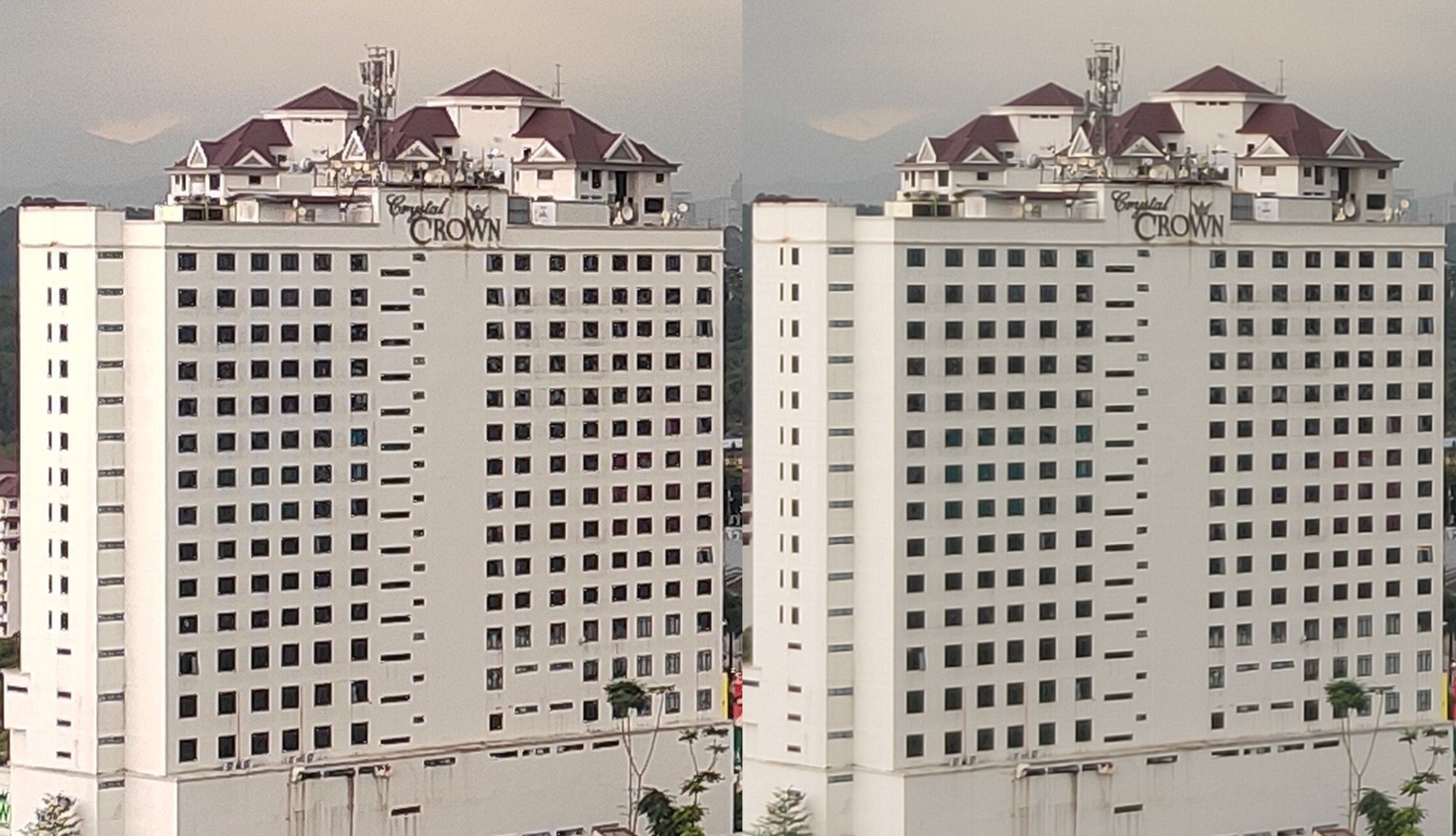
Even in low-light, the difference isn’t very big. Both do a decent job at noise control and colour reproduction, which is solid for a phone at this price point. That said, when you switch on each phone’s “night mode”, I think the Mi 9 SE produces a better image, though not by a huge margin.
Both phones do take a different approach when it comes to portrait mode photos. Xiaomi’s Mi 9 SE uses the telephoto camera which I think takes a much more pleasing composition. The Mi 9 SE also allows you to change the strength of the bokeh in post, but I would stay away from maximum bokeh because it will look really unnatural.

Mi 9 SE — Portrait 
Realme 3 Pro — Portrait
Besides that, the Mi 9 SE also edges the Realme 3 Pro out when it comes to camera versatility. With the additional ultra-wide and telephoto lenses, you’ve got more options when it comes to focal lengths, and a higher quality zoom in good lighting conditions.

For selfies, both phones sport single-camera setups with the Realme 3 Pro sporting the higher resolution 25MP shooter, while the Mi 9 SE settles for 20MP. However, image quality doesn’t seem to differ by much to my eyes.

Realme 3 Pro — Portrait Selfie 
Realme 3 Pro — Selfie 
Mi 9 SE — Portrait Selfie 
Mi 9 SE — Selfie
Finally, let’s look at the other miscellaneous features that make up a desirable smartphone.
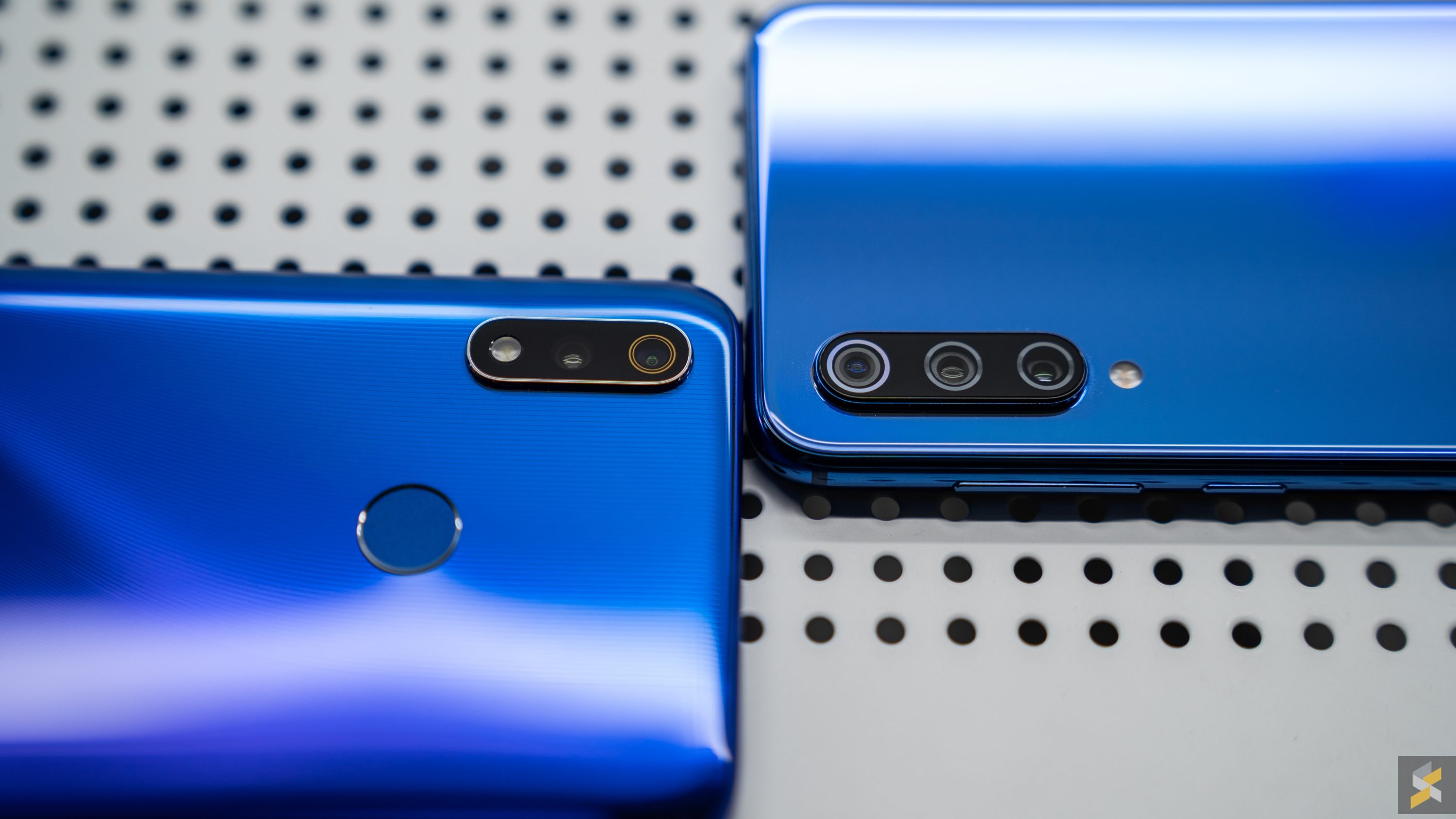
The Other Features
Both the Mi 9 SE and the Realme 3 Pro feature fingerprint scanners, though their implementation is different. The Realme 3 Pro opts for a basic rear-mounted scanner — which is in a very comfortable spot — while the Mi 9 SE features an in-display scanner instead. They’re both pretty quick but I can’t really say which is more secure.
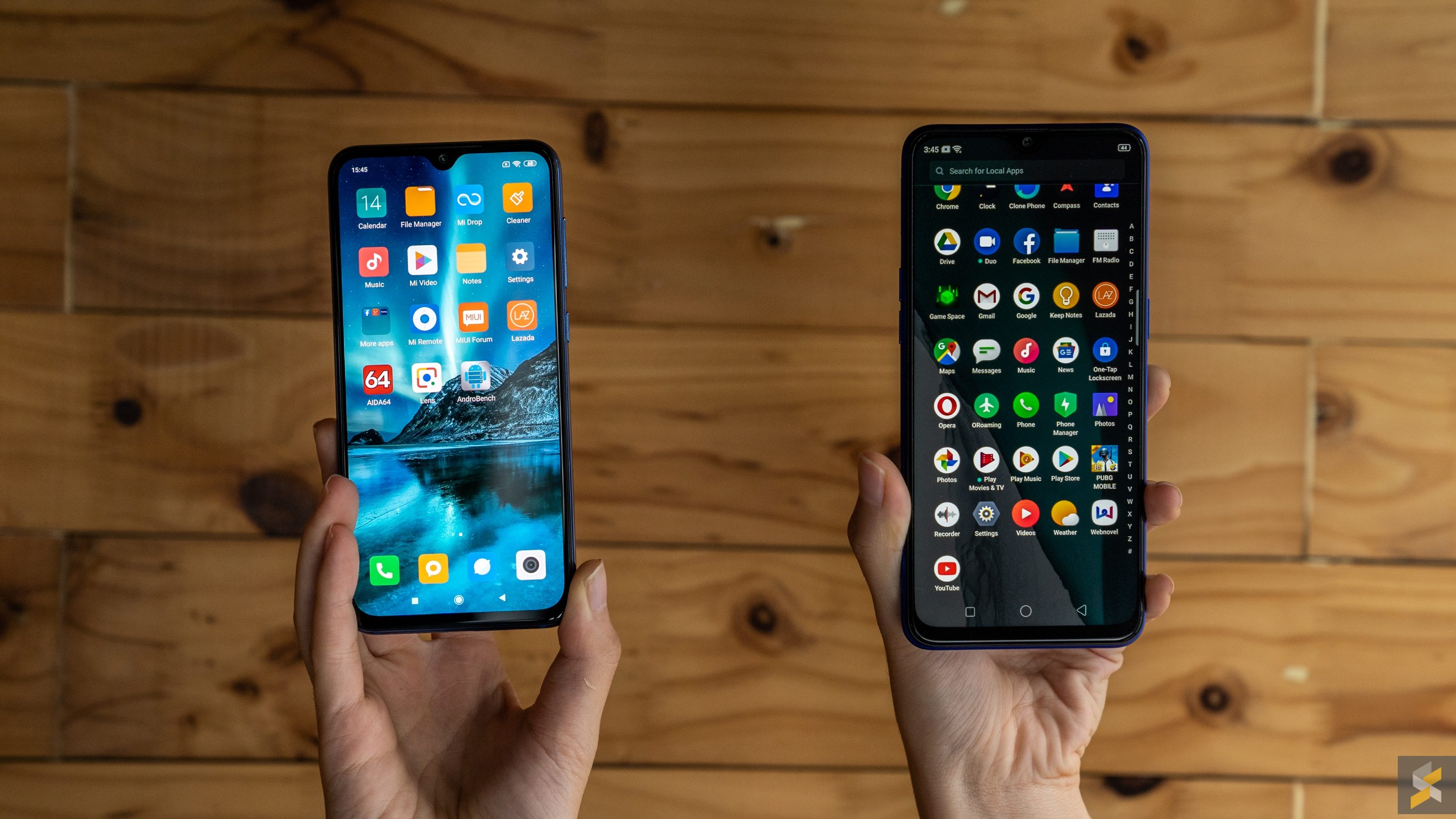
Both handsets also come running Android 9.0 Pie out of the box, but each has its own skin on top. The Mi 9 SE obviously uses MIUI 10, while the Realme 3 Pro opts for ColorOS 6.0, which is similar to what you’d find on an OPPO smartphone.
In my experience, both skins are pretty comparable and they offer slightly different Android experiences. ColorOS has come a long way and I’d say it’s every bit as fluid and frugal as MIUI, so I feel like this comes down to a matter of preference. It is worth noting that on ColorOS 6, you have the ability to enable an app drawer in the settings which isn’t something you can do on MIUI.
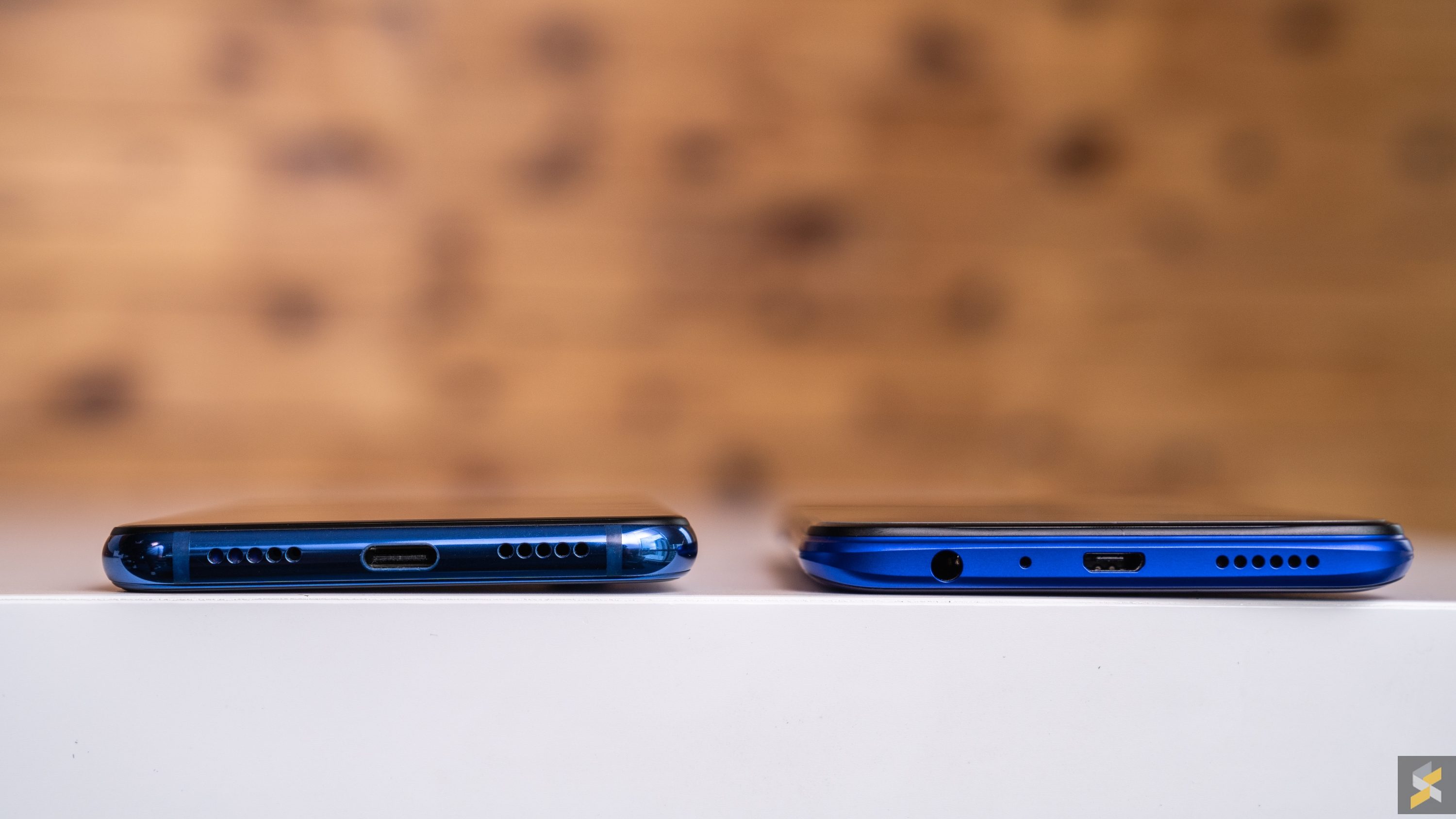
Besides that, neither have stereo speakers, water resistance or wireless charging. But, the Mi 9 SE does have an IR blaster so you can use it as a remote to control your home appliances. That said, the Realme 3 Pro does come with a 3.5mm headphone jack, which is something the Mi 9 SE does not have — and for many, that’s a pretty big deal.
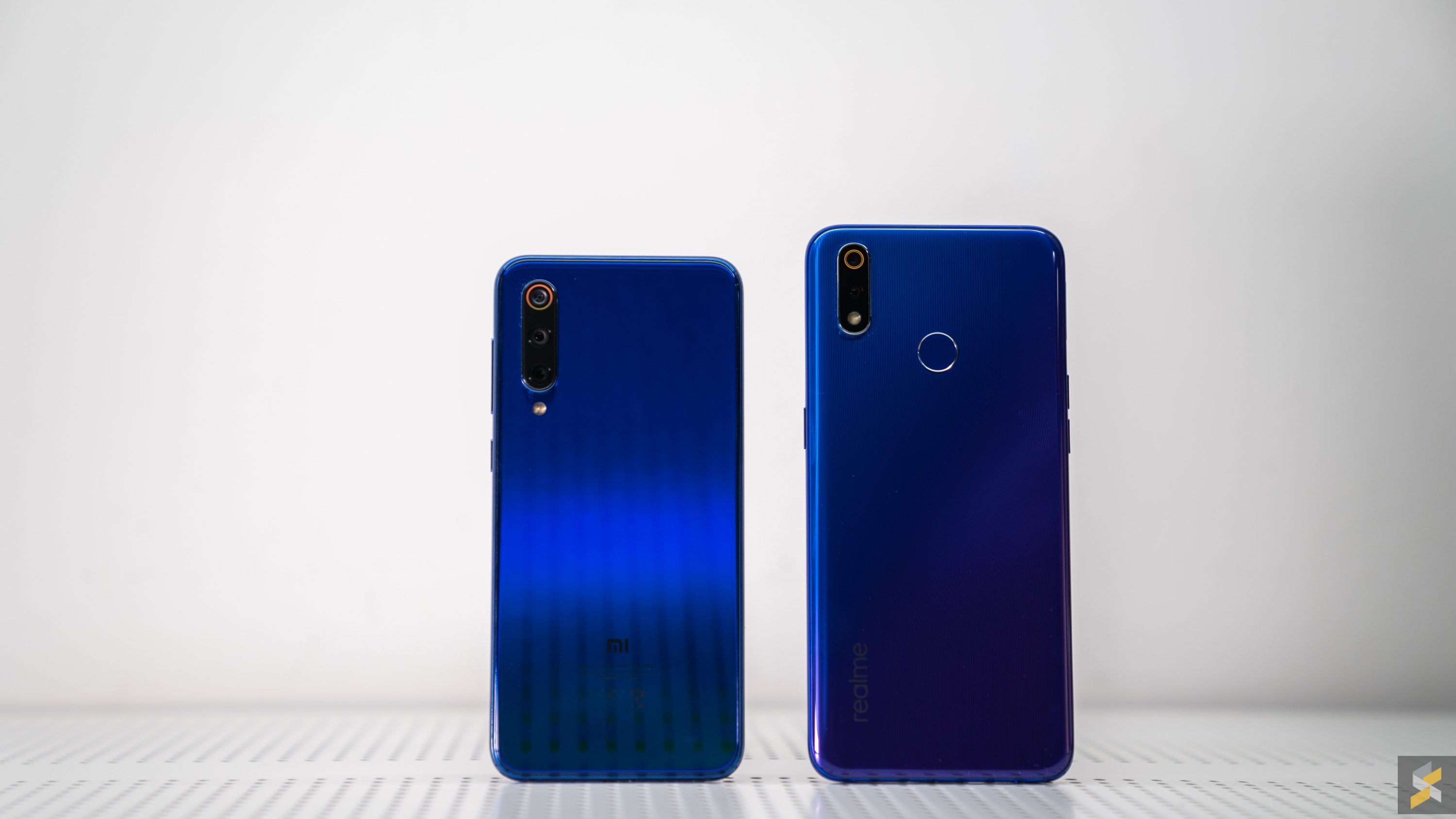
The Price
At the end of the day, I think the most important difference between the two phones has to be the price tag.
The Mi 9 SE is priced at RM1,299 for the base model with 6GB of RAM and 64GB of internal storage. Meanwhile, if you want to double your storage to 128GB, you’ll have to pony up RM1,499 instead.
On the other hand, the Realme 3 Pro has prices starting at a staggering RM899 for the base model with 4GB of RAM and 64GB of internal storage. If you want to match the Mi 9 SE’s top spec memory configuration of 6GB of RAM and 128GB of internal storage, you would only have to pay RM1,099. That’s a pretty big difference in price for two phones that have been trading blows this entire comparison.
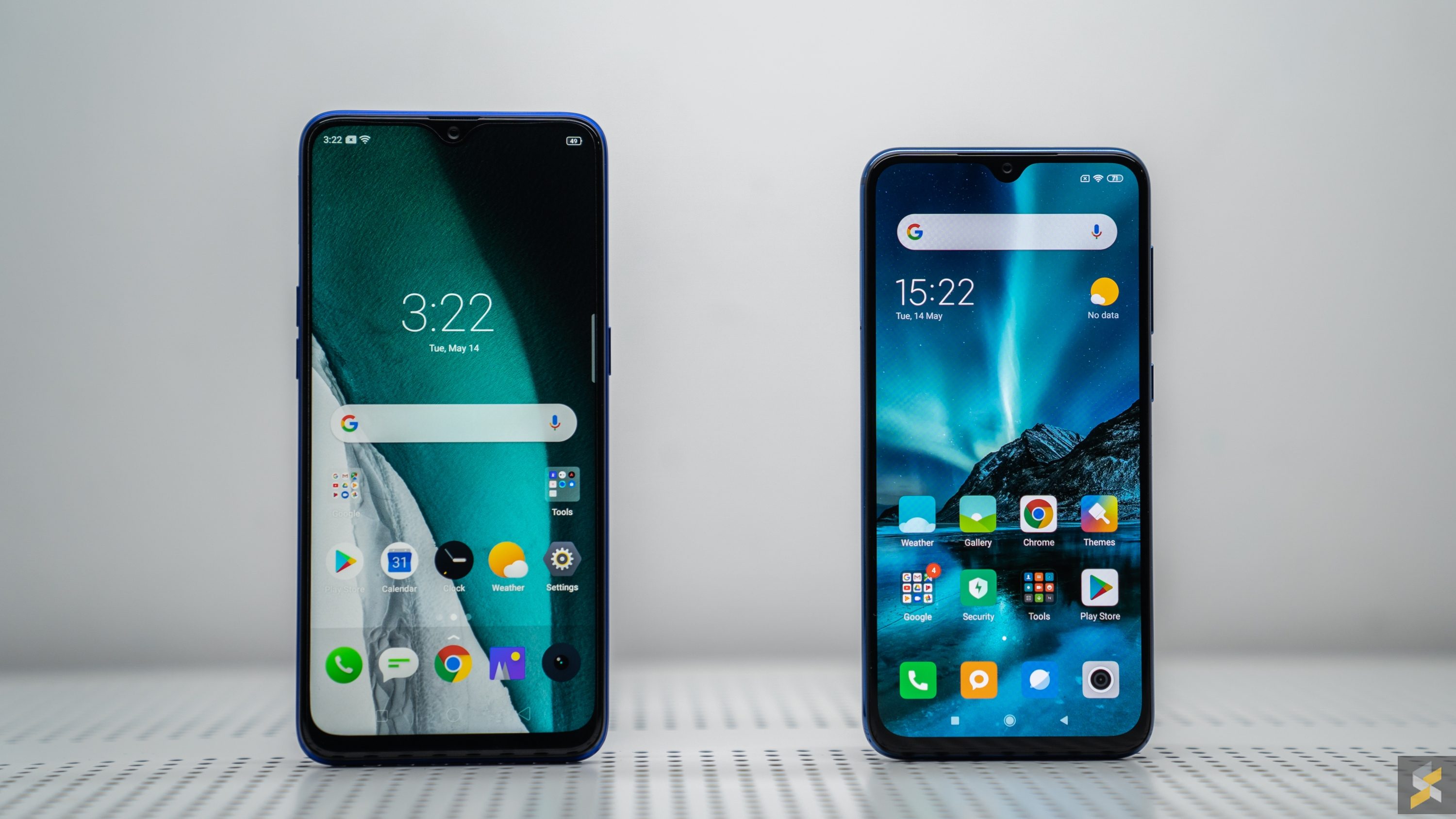
The Bottom Line
I do think that the Mi 9 SE is a better phone overall. It’s got a nicer body, a better camera system, a slightly better processor and a nicer screen. What’s more, I believe that the Realme 3 Pro doesn’t use UFS storage like the Realme 2 Pro did, as the device’s storage benchmark isn’t as good as the Mi 9 SE.
But, are all those differences worth a RM400 discrepancy? I honestly don’t think so. If you’re not particularly bothered about the ultra-wide and telephoto lenses, I think the Realme 3 Pro is the clear choice here.
Plus, if you move into the RM1,500 range, you’ve got a lot more to choose from. You can get something like a Pocophone F1 or a Mi MIX 2S which have flagship-grade processors. And for RM200 more, you can even get a proper Mi 9 with a Snapdragon 855 and a much better camera system.
But that’s what I think. What do you guys think of the Mi 9 SE and the Realme 3 Pro? Which would you pick? Let me know in the comments below.

